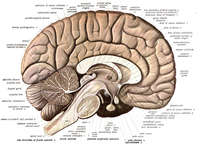Computational neuroanatomy

Computational neuroanatomy is like creating a map of the brain using computers.
Okay, so imagine you have a big puzzle with lots of pieces. You want to put all the pieces together to make a picture, but it's really hard because there are so many pieces and they're all different shapes. That's kind of like what the brain is like. It has lots of different parts that all work together, but it can be hard to understand how they fit together.
Computational neuroanatomy helps with this by using computers to look at all the different parts of the brain and figure out how they connect to each other. It's like having a really smart friend who's really good at puzzles and can help you put all the pieces together.
Scientists take pictures of the brain and use special computer programs to create a 3D model of it. They can then look at this model to see how all the different parts fit together and how they work together to make the brain do what it does.
So basically, computational neuroanatomy helps scientists understand how the brain works by creating a map of it using computers.
Okay, so imagine you have a big puzzle with lots of pieces. You want to put all the pieces together to make a picture, but it's really hard because there are so many pieces and they're all different shapes. That's kind of like what the brain is like. It has lots of different parts that all work together, but it can be hard to understand how they fit together.
Computational neuroanatomy helps with this by using computers to look at all the different parts of the brain and figure out how they connect to each other. It's like having a really smart friend who's really good at puzzles and can help you put all the pieces together.
Scientists take pictures of the brain and use special computer programs to create a 3D model of it. They can then look at this model to see how all the different parts fit together and how they work together to make the brain do what it does.
So basically, computational neuroanatomy helps scientists understand how the brain works by creating a map of it using computers.
Related topics others have asked about:
